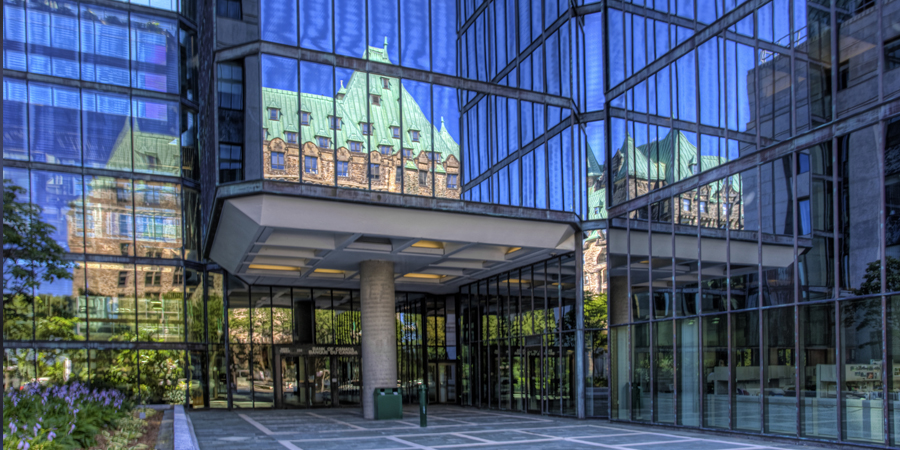by Eric Winograd, Senior Economist—United States, Fixed Income AllianceBernstein
With the US economy humming and the Fed seemingly pushing all the right buttons, it makes sense to expect more of the same in 2018. That means more rate hikes on the way. The question is: How many?
The US Federal Open Market Committee (FOMC) ended 2017 quietly by doing the expected—raising the benchmark interest rate by 25 basis points. Based on the “dot plot” chart of each committee member’s rate expectations, a majority expect to hike rates three more times in 2018.
The Economy Is Hitting On All Cylinders
Our 2018 forecast is more aggressive on rates, calling for four hikes. A strong outlook for the US economy, buoyed by an improved global picture, underpins our assessment. To put it simply, the economy is as strong as it’s been since the global financial crisis.
The data support our assessment. Retail sales were robust to kick off the holiday season, and fourth-quarter gross domestic product (GDP) is tracking at about 3% on a quarterly annualized basis. If growth hits that rate, it would be the third straight quarter, the first such streak since 2004–2005. We expect growth to remain above trend in 2018, and so does the Fed—it upped its 2018 forecast, too.
The labor market is strong as well. The economy has added roughly 175,000 jobs per month over the past year, and the unemployment rate has fallen to 4.1%. The Fed’s revised its forecast on that front, too, projecting the unemployment rate to drop below 4.0% in 2018.
Inflation—or Lack of It—Remains a Puzzle
With the economy and labor market so strong, it seems very straightforward to expect three or more interest-rate hikes next year. After all, the Fed raised rates three times this year, even though that strength wasn’t nearly as obvious. But the market is still pricing in fewer than two hikes in 2018.
What gives?
The answer is inflation, which remains stubbornly below the Fed’s 2.0% target. The core consumer price index (CPI) is now at 1.7%, down about 0.5% from a year ago and flat over the past six months. Clearly, the market is still skeptical that inflation will rise, and recent data validate that stance to some degree: November’s CPI was below expectations, despite the robust economy.
We generally expect inflation to rise in the next few months, but we acknowledge the uncertainty around that forecast—inflation has puzzled economists all year. The Fed seems a bit confused about inflation, too: the Fed released a higher growth forecast and lower unemployment forecast—but didn’t change its inflation forecasts at all.
That’s unusual—the Phillips curve relationship that describes the trade-off between growth and inflation suggests that stronger growth should lead to higher inflation. It’s obvious that the Fed is being cautious about forecasting price pressures, so it may take more growth than expected to push prices higher.
Look for Quarterly Rate Hikes in 2018
If the Fed is indeed uncertain about inflation, why is it still forecasting more rate hikes than the market is, and why do we think the Fed has it right?
The answer is simple: because what the FOMC has done so far is working marvelously: Inflation is low, but not so low that we need to worry about deflation. Growth is very strong. Financial markets are thriving. Today, the Fed seems closer to achieving its estimate of 2% potential growth and its target of 2% inflation simultaneously than at just about any other point in the past 20 years.
The outstanding track record gives the FOMC every incentive to continue its policy prescription—especially with committee leadership transitioning from Janet Yellen to Jay Powell in early 2018. That prescription included three rate hikes and the start of balance-sheet reduction in 2017.
Those rate hikes were rolled out even as inflation fell and before the economy’s strength was as apparent as it is today. Now, inflation is stable (and likely to rise, in our view) and the economy is performing better than it has in more than a decade. As a result, we expect the Fed to continue raising rates at quarterly intervals throughout 2018. That would make a total of four hikes during the year.
The risks to that forecast are balanced: If inflation rises faster than expected, the FOMC could become more aggressive. If growth slows sooner or more sharply than expected, the committee could move to a more conservative posture. But our base-case forecast is for quarterly rate hikes until further notice.
That’s the policy that has brought us here, and since it isn’t broken, the Fed won’t try to fix it.
The views expressed herein do not constitute research, investment advice or trade recommendations and do not necessarily represent the views of all AB portfolio-management teams.
Copyright © AllianceBernstein














